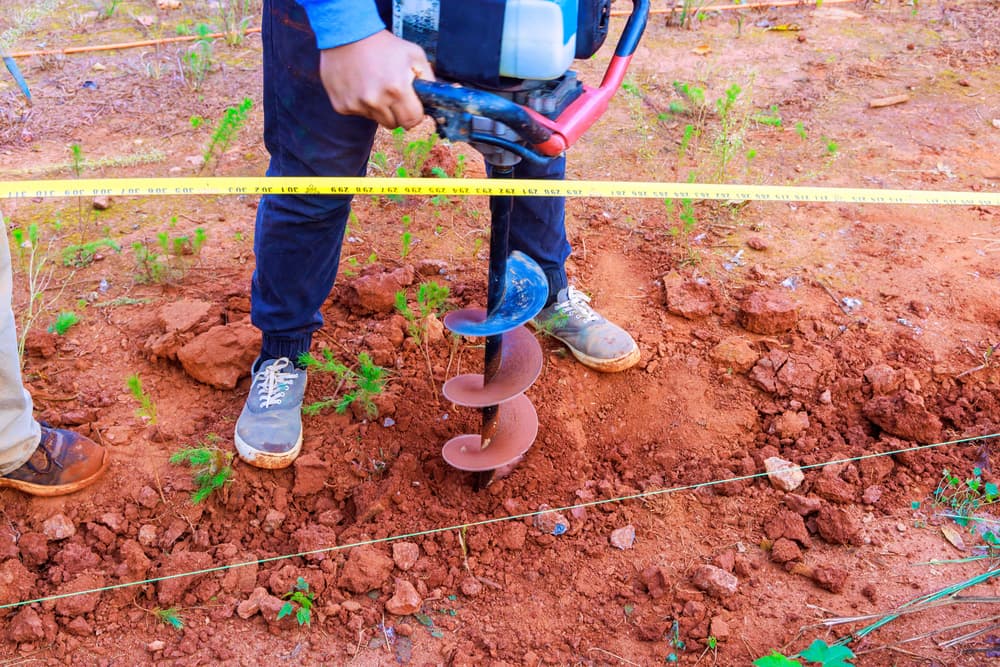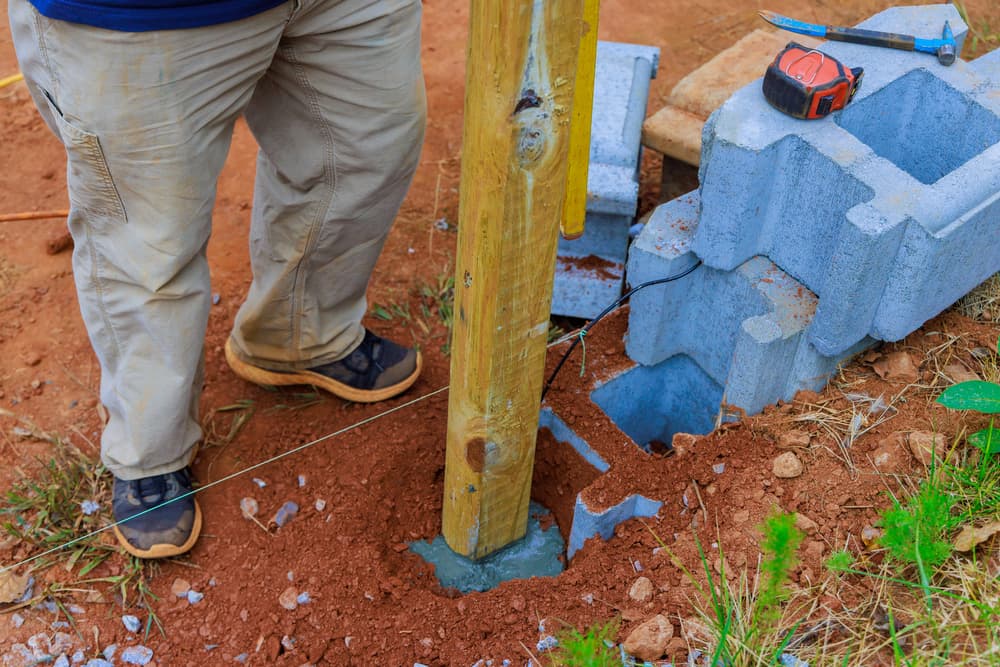How Deep Should a Timber Fence Post Be?
For most residential fences in Australia, the rule of thumb is to dig your post hole one-third the height of the post, with a minimum depth of 600mm. So, if your fence is 1.8m tall, the hole should be at least 0.6m deep.
If your posts are not deep enough, your fence could lean, wobble, or even fall over before you know it.
However, factors such as weather, soil type, and the fence’s purpose are also important considerations. Keep reading, as we will discuss the basics, key factors, and helpful tips to ensure you build your timber fence right.
What is the Standard Depth of a Fence Post?
When building a fence that lasts, getting the timber fence post depth right is key.
A general rule of thumb is the 1/3 rule. That means at least one-third of the total post length should be underground. This standard helps anchor the post firmly and keeps your fence strong against wind, rain, and everyday wear and tear.
Here’s an example: If you are building a 1.8m (6ft) tall fence, your post should be 2.4m long, with 600mm buried in the ground.
While the 1/3 rule is the standard, your fence post depth should also align with your fence height and environmental conditions. Below are some common minimum depth recommendations:
- Under 1.5m fencing: 450 to 600mm deep post holes
- Standard 1.8m fencing: 600 to 750mm deep post holes
- Fences in high wind zones: 900mm or more for extra stability
- Higher fences or poor soil: Consult a professional for advice
The deeper the post, the better it handles movement, weight, and harsh weather.
What Happens if Fence Posts are not Deep Enough?
A too-shallow fence post may save you time upfront, but it may give you these problems and headaches later:
- Structural Instability: Shallow posts can’t handle pressure. Over time, they’ll lean, wobble, or collapse entirely. Gates might sag, and panels could detach.
- Poor Weather Resistance: Wind, rain, and frost can lift or push poorly anchored posts. In cold climates, frost heaves (the expansion of freezing soil) can displace posts from the ground.
- Short Lifespan: Posts set too high rot faster because of exposure to moisture and pests. Termites or decay can eat through weak spots near the surface.
- Uneven Settling: If fence posts shift at different rates, your fence will be a rollercoaster, uneven and wavy.
- Safety Risks: A wobbly fence becomes a hazard during storms. Loose posts or flying debris could damage property or hurt someone.
- Costly Repairs: Fixing or replacing a fallen fence costs way more than digging deeper holes initially.
Bottom line? Doing a shallow fence post hole is like building on a weak foundation. It might stand for a bit, but it won’t last. So, taking the time to dig deep enough saves you a lot of trouble in the long run.

What Factors Influence Fence Post Depth?
Not all fences are the same, and several things dictate how deep your fence posts need to be. For a strong and long-lasting timber fence, keep these factors in mind when planning:
- Soil Type: Sandy or loose soil requires deeper posts because it does not hold them in place well. In contrast, clay soil expands and contracts with moisture, so installing posts at extra depth helps prevent them from shifting.
- Fence Height and Material: When using taller fences or heavier materials, like hardwood panels, it is best to install deeper posts for added stability.
- Wind Exposure: Coastal or open rural areas with strong winds need sturdier, deeper posts to resist blowing over.
- Climate: Areas with heavy rain or high winds benefit from deeper holes to improve fence stability.
- Post Material: Timber, steel, and concrete posts each have different depth needs based on strength and durability.
- Ground Freezing: In places with freezing winters, bury posts deeper to avoid frost heave, which can lift and damage the fence.
- Australian Specifics: Builders should account for termites and use treated pine or resistant hardwoods in affected zones. Frost lines are primarily a concern in alpine regions. Local councils may also have regulations on minimum post depths for boundary fences, so be sure to check these requirements.
Other Practical Tips and Mistakes to Avoid
In fence post installation, a few simple steps can make a big difference in how long your fence lasts and how good it looks. Here are some common mistakes to watch out for, along with helpful tips:
- Don’t go too shallow. Posts that aren’t deep enough may wobble or even fall over with time.
- Add a gravel base. A layer of gravel at the bottom of the hole helps with drainage and keeps wooden posts from rotting.
- Use concrete. Pouring concrete around the post provides added strength and prevents it from moving.
- Avoid poor alignment. Always double-check the spacing and placement of your posts. Crooked posts can make your entire fence look uneven.
- Keep post depths even. Uneven holes result in a lopsided fence or create weak spots.
- Call before you dig. Contact your local utility company to ensure you don’t accidentally hit any underground pipes or wires.

Consult a Professional for Advice
In summary, digging your fence posts deep enough is essential for creating a strong and long-lasting fence.
Remember the one-third rule. Soil type, fence height, and weather are also important factors. Also, avoid shallow holes and ensure accurate post alignment. By following these steps, you will save time and money in the long run.
Ask us for expert advice. Contact That’s Fencing on 0452 280 559, or visit our contact page to get started on building the perfect fence.

